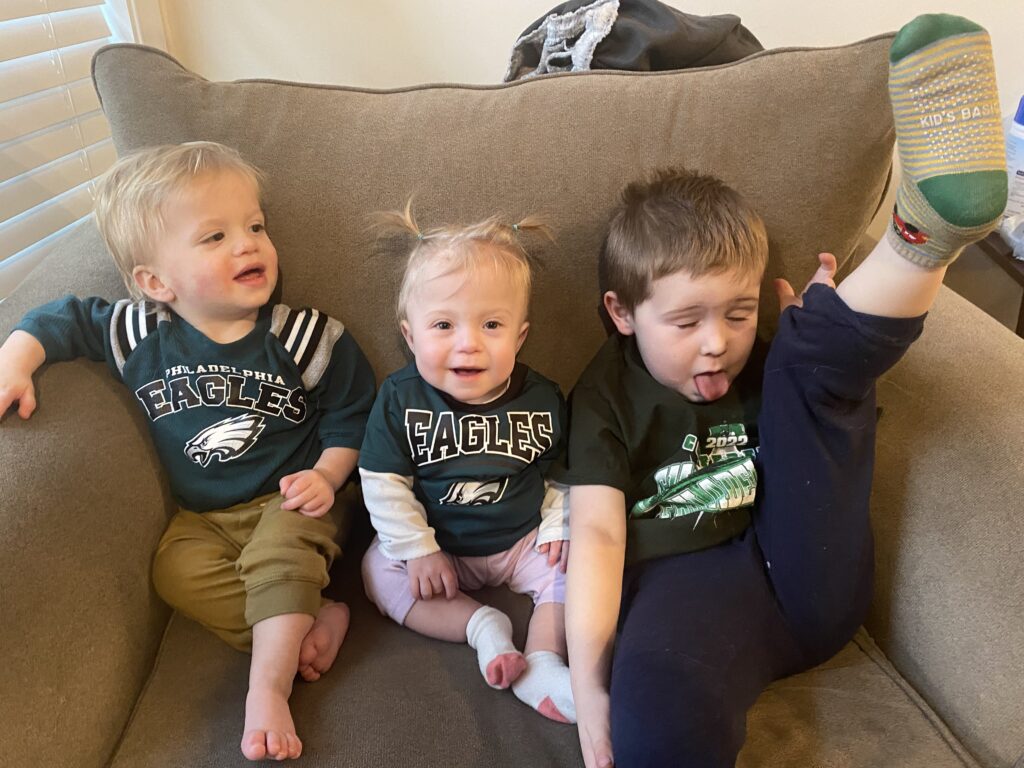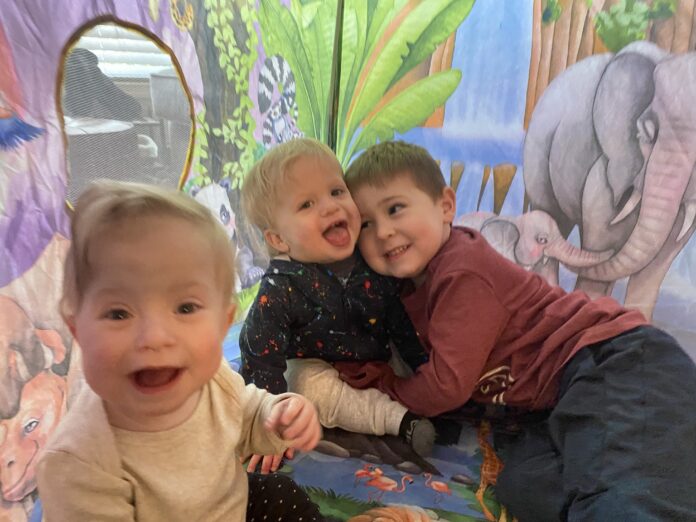It’s February, which means things like Black History Month, President’s Day, Valentine’s Day and, if you’re anything like me, your New Year’s resolutions are slowly fizzling out.
Research has shown that the resolutions we often make for ourselves at the start of a year — to eat better, exercise more, drink less alcohol, drink more water, take on a new challenge or even start a hobby — just don’t work. Perhaps it’s because they’re not getting to the root of the problem that is necessitating them to begin with, or maybe we’re just not well-trained to tend to our own wants and wellbeing.
Parents, in particular, are programmed to put our needs at the bottom of the to-do list so we can focus on our kids, which is why, this February, I’m throwing out my New Year’s resolutions (who really needs to lose those 10 pounds anyway?) and shifting gears. If resolutions for myself don’t stick, maybe if they’re for my little ones, they will.
Here are a few parent-friendly ideas for 2023 goals:
The oldest
With two 1-year-old siblings now in the house, my 4-year-old, Jackson, now seems huge. We just had to upgrade him to a twin bed from his toddler one because his feet were just about dangling over the end, and he’s growing out of his 5T clothes quicker than we can restock his drawers. He gets homework in pre-K, he talks about who he’s going to marry, he just learned how to ride a bike, he gets himself into and out of his car seat buckle. Compared to his two always-screaming siblings, he’s a self-reliant delight.
But this year, I want to try to remember that he really is just 4 years old. In the context of baby siblings, he seems old and big and like he should be ready for anything — and that often colors my treatment of him. Sometimes I think, “You can wipe your own butt, why the hell are you having a tantrum because the dessert I gave you isn’t large enough?” Or “You know stealing toys from your brother’s hand will land you in timeout, so why do you keep doing it?” Even though he has two younger siblings now, those additions didn’t actually age him (they did Ashlee and I, for sure!), even though sometimes we treat him as such.
But he really is just 4. He’s terrified monsters are going to sneak into his bedroom (but we explain that, obviously, they don’t have hands so they can’t turn doorknobs!). He won’t go into our kitchen himself because “something” will get him. He thinks Elf on the Shelf makes the trek to and from the North Pole every night in December. He named his private region “Mr. Ice Cream Face” (a departure from the previous name: “Dolly”).
I want to make sure I laugh at all of those silly Jacksonisms and let go of the stress that comes with tantrums and meltdowns so I can better appreciate just how young he still is. He’s learning, he’s testing boundaries and, yes, he may be growing up quickly, but he’s still just growing.
And I don’t want to miss a moment of it because I never knew when each moment will be the last. As parents, we spend a lot of time focused on our babies’ firsts: first crawl, first walk, first word. But I want to invest just as much in paying attention to his lasts because they come quickly and unexpectedly. I recently noticed he no longer pronounces “ambulance” as “ambs,” he doesn’t need to stand on tip-toes anymore to use the toilet, his scribbles look like actual drawings, and he can nimbly assemble an award-winning Lego truck.
There was a last before a first in each of those, and I’m going to do my best to catch as many more as I can.
The middle

Although he’s just two minutes older than Avery, August is technically the middle child, and he fits that stereotypical mold rather perfectly, the negative connotations of which I’m hoping to break this year.
Middle children are often joked about as being the “forgotten” ones, the kid caught quite literally in the middle likely growing up under less intense supervision than the first and without the spotlight of being the youngest. These are exacerbated in our case.
Jackson is 4, an age that demands A LOT of attention. And with two still-relatively new additions to our family, barely a minute goes by where he’s not using his bigger voice and size to be the dominant sibling. And then there’s Avery, whose harrowing five months in the NICU made her the darling of the family to start with, and whose ongoing struggles with feeding, motor delays and a host of other challenges mean she gobbles up her own fair share of our attention. And that sometimes leaves August to do … whatever he wants!
Just yesterday, Ashlee couldn’t find him (not uncommon, though our house is securely protected throughout by baby gates!) and finally heard some grumbling in the kitchen, where he had popped open a cabinet, taken out a pack of Fig Newtowns and was going to town by himself. He’s often getting into trouble like this: locking himself in the bathroom accidentally, emptying drawers, getting stuck under furniture. We joke about how much more of a troublemaker he is at this age than Jackson ever was (and add buying more baby locks for our cabinets to our ever-growing to-do list), but we sometimes worry he’s such an independent explorer because, as that middle child, he was thrust into that role.
It’s probably a bit of nurture and a bit of nature, but either way, I’m resolving to explore more alongside him, rather than letting him go that path on his own. Maybe next time I find him opening and closing the bathroom door and cackling in delight, I’ll sit down next to him and see what all the fuss is about.
The youngest
On Super Bowl Sunday, Avery started crawling. It was one of the happiest moments we’ve had since the day they were born (though it was hampered just a touch, of course, by the Eagles outcome later that evening…).
Being born at just over 1 pound inherently sets you up for a lot of challenges. At 15 months old, Avery is not yet 14 pounds, about the size of a 4-month-old. She spent five months lying in a bed, which–coupled with her intrauterine growth restriction, micro-preemie status and slow growth–left her with low muscle tone that has meant significant motor delays. And since she didn’t start practicing bottle feeding until about the time babies typically lose their sucking reflex, she gets all of her nutrition through a feeding tube.
For nearly a year since she got home from the NICU, those limitations have been the driving focus of our daily routine. Prime Avery’s pump. Practice spoon feeding. 10 minutes on the exercise ball. Do Avery’s hip stretches. Have her reach to the left; have her reach to the right. At least two feeding practices per day and nearly every spare minute when she’s not sleeping spent running through her litany of PT and OT exercises.
For months, her weekly therapy sessions were devoted to troubleshooting the areas holding her back from reaching milestones like crawling: learning to lift a hip as she turned to get into hands and knees, being strong enough to bear weight through her arms, not collapsing onto her belly. So, when she finally pulled it all together and crawled, it was exhilarating, rewarding and every other positive adjective I could think of.
Ultimately, she decided it was time to get up and move after I spent too long trying to take pictures of her and her brother in their Eagles jerseys; she was sick of it and wanted out. She’s stubborn and she knows what she wants when she wants it. But for so long, I’ve been seeing her journey to milestones like this through the lens of what she’s not doing rather than looking beyond those limitations to see who she is.

Looking back, I can see how much there was to be learned about who Avery is from her progress. As soon as she caught on that people would clap for her when she accomplished a task, she would feed off of that support and quickly and confidently master it. But she really hits her stride — reaching, rolling, pulling herself up — when we leave a room and she’s left to her own devices, perhaps suggesting she’s someone who will learn best by doing things herself. That’s where I want to put more of my focus from now on: not on what she can’t do, but on how who she is shines through in what she can do. I want to start enjoying the journey with her, instead of just searching for the finish line.
While these resolutions are kid-focused, I think they may have the unintended consequence of also helping me reach some of my own personal goals. Seeing my three kids better will require me being more present, calmer, focused, more connected — all of which would earn high marks on a New Year’s resolutions list. They may not do anything for those 10 pounds, but maybe next year!
